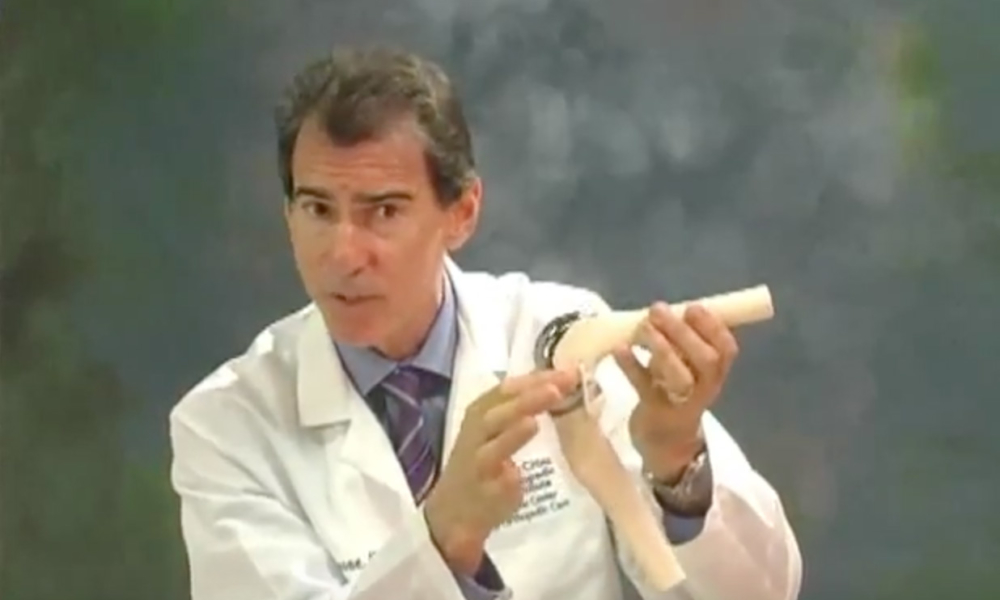
Partial vs. Total Hip Replacement Surgery
/
2 Comments
Some patients in need of a hip replacement will ask me if they are candidates for a partial rather than a total hip replacement because it sounds “less invasive.” Unlike the knee (which has three distinct compartments and when one wears out there’s a good chance that only that compartment needs to be replaced), the hip is a single ball (femoral head) and joint socket (acetabulum) and a partial hip replacement often isn’t the optimum choice.

An Updated Look at the Effectiveness of Hip Arthroscopy: Who is a good candidate?
Arthroscopy is a surgical technique that has revolutionized how some complex problems that develop in certain joints are treated, including the hip, knee, shoulder, ankle, elbow and wrist.

Hip Arthroscopy: Who is a Good Candidate?
Arthroscopy is a surgical technique that has revolutionized how some complex problems that develop in certain joints are treated, including the hip, knee, shoulder, ankle, elbow and wrist.

Poor Results after TKR Due to Infection: Diagnosis and Treatment
For the second of three blog posts about post-surgical complications and unsatisfactory results after total knee replacement (TKR), I will discuss the critical need to rule out infection and if present, how to treat it.

Correcting TKR Post-Surgical Complications and Unsatisfactory Results
In my previous blog post, I shared that one out of five people (approximately 20 percent) who undergo Total Knee Replacement (TKR) are not satisfied with the result. I discussed the methods we use to understand the exact cause/causes of unsatisfactory outcomes, in order to improve these results.

Pain and Discomfort after Total Knee Replacement Surgery: Signs TKR Has Failed
Total knee replacement (TKR) has been one of the most successful surgeries developed over the past century and has improved the quality of life for countless people.

Why Partial Hip Replacements Fail and Determining when It’s Time to Covert to a Total Hip Replacement
In a previous blog, I discussed in detail the difference between partial and total hip replacements. Basically, a partial hip replacement (hemiarthroplasty) is performed to treat femoral neck fractures which are a type of hip fracture.

Joint Replacement Surgery for Osteoarthritis Q&A
As comments and very detailed questions from readers continue to be posted on my blog, it occurred to me that it was time to do a series of Q&A posts that talk about joints and why they deteriorate, as well as what treatments and surgeries are available today to get people back on their feet and enjoying a pain-free lifestyle.

Total Hip Replacement Surgery Can Restore an Active Sports Lifestyle
In several past blog posts, I have discussed how total hip replacement surgery (THR) has been a game changer, not only for some elderly patients who have lost mobility but for younger and older men and women who seek treatment to regain active and/or maintain a vigorous lifestyle.

Age Is Not the Determining Factor in Joint Replacement Surgery
Two of the most common questions we receive at The Leone Center for Orthopedic Care are, “How old is too old to have joint replacement surgery?” and “How young is too young to have Joint replacement surgery?”

Leading Edge Strategies to Regenerate Hyaline Cartilage
My final blog in this series on biologic strategies for repairing joint damage focuses on leading edge treatments designed to stimulate the regeneration of new hyaline cartilage: Osteochondral Autograft Transplantation (OATS or Mosaicplasty), Osteochondral Allograft Transplantation, Autologous Chondrocyte Implantation (ACI) and Stem Cell and Tissue engineering.

Misconceptions about Partial and Total Knee Replacement
Before considering knee surgery, you and your surgeon must carefully weigh the benefits of partial versus total knee replacement. Although age and physical activity play a role in the decision-making process, by far the most important consideration is the condition of the knee joint.



